POST AFTERLIFE // WS 21/22 // Design project
Some of us do, some of us don´t (believe in an afterlife), but all of us should consider and think about the afterlife of products (garments, accessories, materials…) that we as designers create or use.
This semester we did focus on designing a product’s afterlife during or even before designing the actual product. What purpose will it have after it has been loved, worn or just become unfashionable. How can it be designed, assembled and finished in order to be reassembled again? How should it been handled and maintained, to serve both lives? How can seams, knit, and embellishment be undone and redone to form new garments and products? How can a pattern be more than just a pattern?How can a soul of a product find another body?
Lecturer: Prof. Wowo (Waldemar) Kraus, KM Alexandra Börner, KM Magdalena Kohler
// Titia Grete & Mai Hang „Transitional Object“
Back when we were children, we were living in a world where responsibility and the pressure of society do not exist. Adulthood is a game, everything is a fantasy and you are innocently free. At night your teddy bear is guarding you, never leaving you feeling left alone. The teddy bear is a transitional object, guiding us from one part of our life to the next. Once we grow up, we leave it behind. We’re not only leaving the teddy bear behind, we also leave the easiness and levity of childhood behind – ending up in a world full of stress, responsibility and obligation.
In our project we are telling the story of rediscovering childhood and finding back the forgotten easiness and innocence.
Our starting point is the teddy bear. It’s being left behind in adulthood, which is represented through a dress, that is constructed with the teddy bear pattern. Although the bear is not visible and the memories of childhood are not present, they are still a part of the protagonist. Through a transforming process with water the seams of the dress fall apart and the protagonist remembers and rediscovers the feelings of childhood and its vulnerability. The items resulting from the transformation can be worn as accessoires which enables our protagonist to share her fond memories with other people. With that she is sharing the easiness and levity of childhood. In the end the teddy bear is still helping her to transition from one life stage to another.
Photos: Matthias Leidinger
Video: Christoph Hövel
Model: Aurelia Lehmann
// Patrick Engelmayer, Leif Kessler „Waste -1“
Die Konstruktion von Schnittteilen in unserer heutigen Bekleidung ist immer komplexer geworden und eine ständige Transformation ist daher nur noch durch ständigen Konsum möglich. Um diese Transformation erneut möglich zu machen, unterteilten wir ein ausgesuchtes Material in verschiedenen Größennormung, inspiriert von dem DIN-A Format. Hierbei wird die Stofffläche aufgeteilt, um mehrere Rechtecke zu erhalten, welche mit Hilfe von Abnähern zu Schnittteilen formiert werden können. Um die Dekonstruktion und Rekonstruktion der Schnittteilen zu ermöglichen, darf nicht eingeschnitten werden.Die aufgetrennten Rechtecke können je nach Belieben weiterverwendet werden, um als anderes Kleidungsstück ein neues Leben zu beginnen. Als Material wurden Weiße Tischdecken wiederverwendet. Durch die weiße Materialität und mögliche Transformation dienen die Rechtecke als Ausgangsmaterial für jede Bearbeitungstechnik, Schnitt und Design. Die erschaffenen Kleidungsstücke sollen eine Verkörperung der Möglichkeit einer ständigen Transformation darstellen. Die angewandte Technik bietet eine alternative
zu dem Konventionellen Schnittsystemen und der Interaktion mit Textilien dar. Sie soll als Open Source frei zugänglich sein, um die Weiterentwicklung des Konzeptes zu ermöglichen.
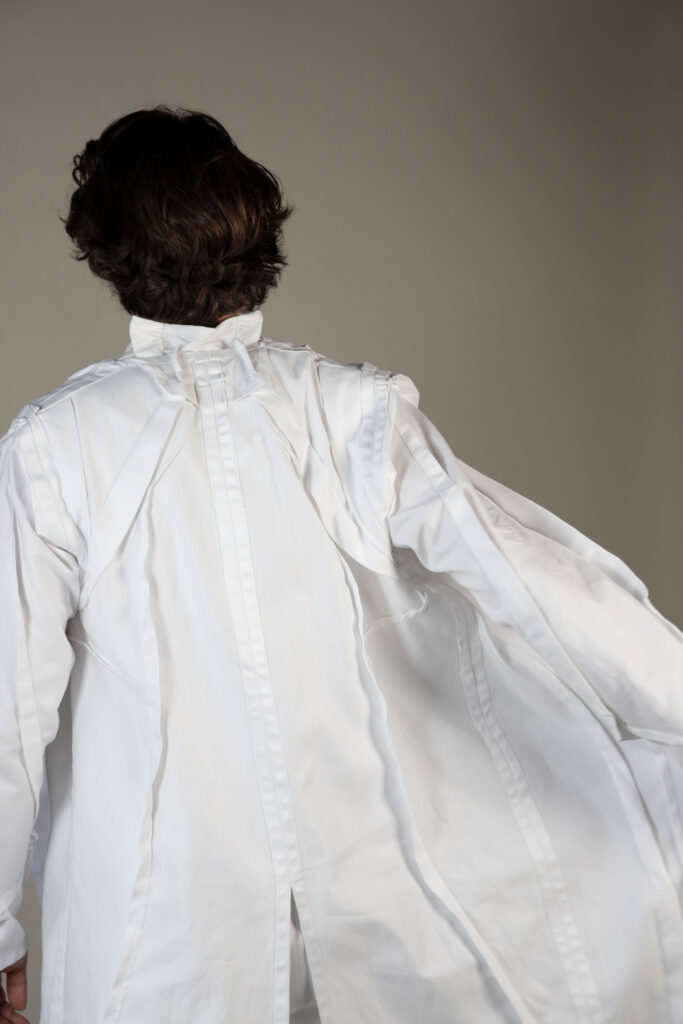
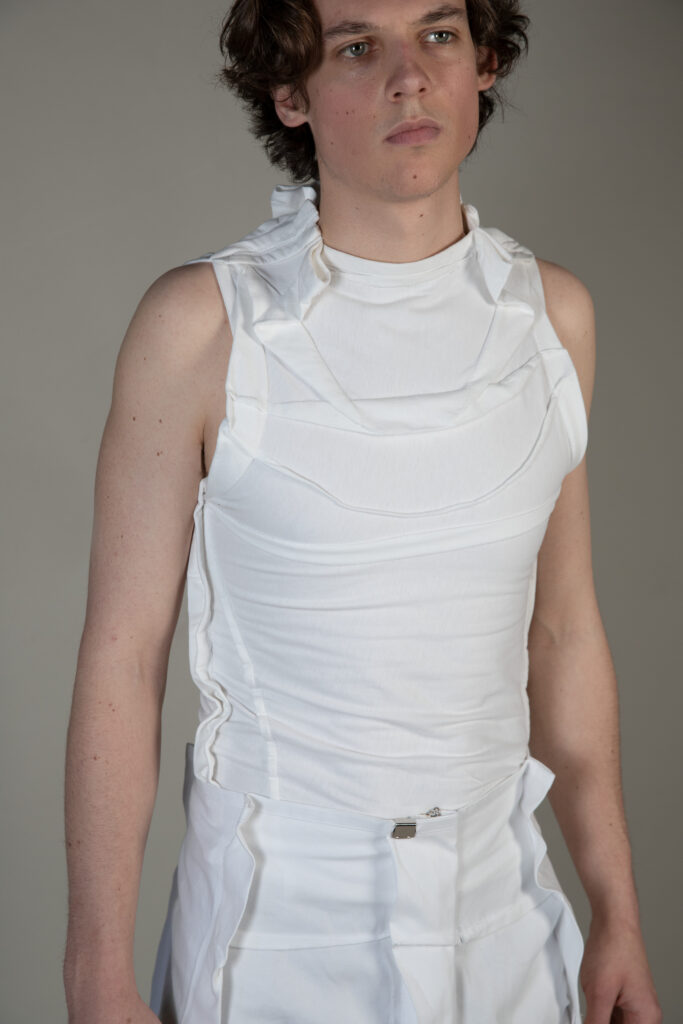

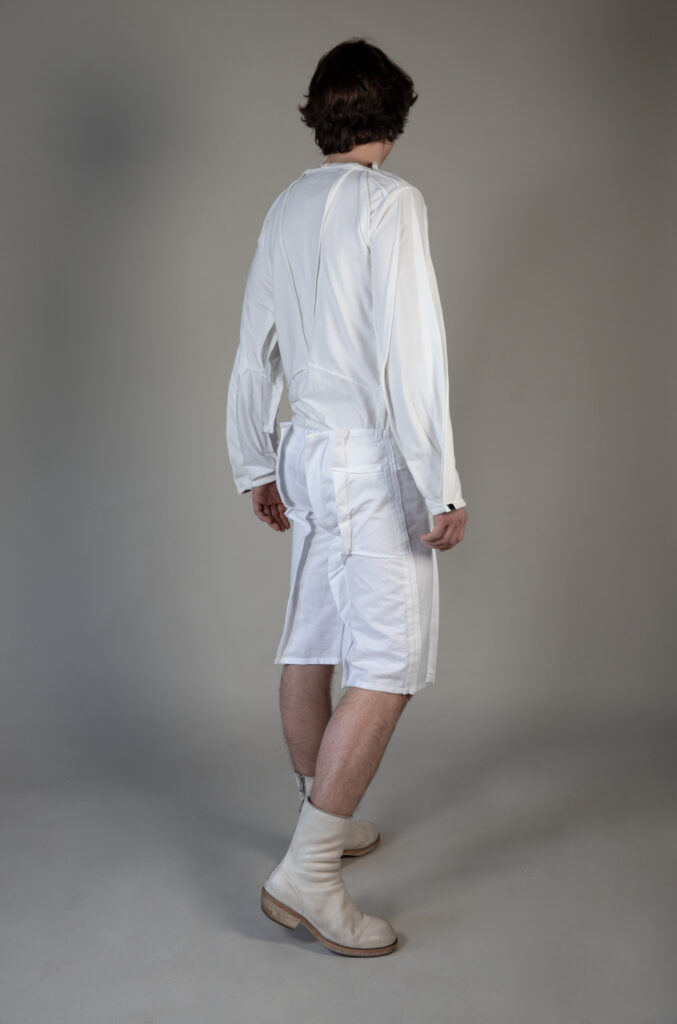
Photos: Franziska Vehring
Model: Luca Ortmann
// Philip Welp & Jonathan Aurel Richter
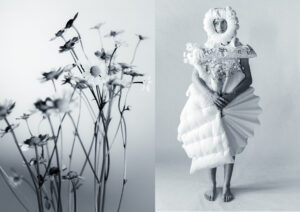


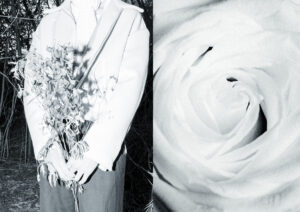
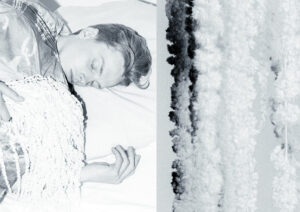
Fotograf: Matthias Leidinger
Set Design: Leoni Edith Kolbeck
Model: Leif Kessler
Design: Jonathan Richter & Philip Welp
Styling Assistant: Simon Carle
// Karl Hoess & Tim Escher „Wer Früher Stirbt Ist Länger Tod“
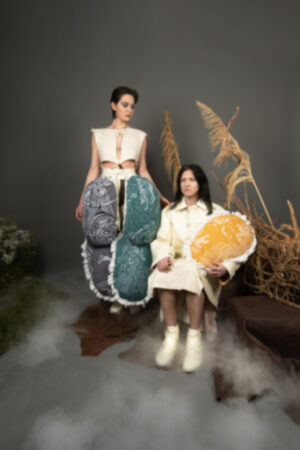
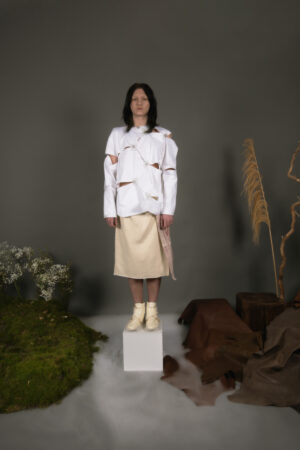

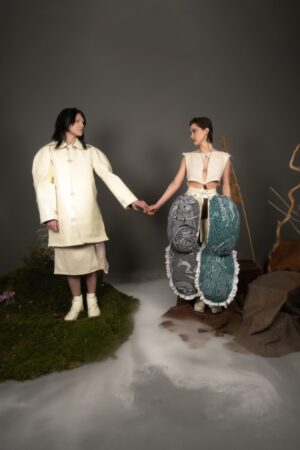
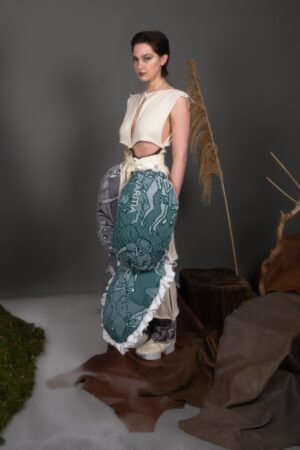
Photo: Fiona Teal
Hair&MakeUp: Gabriela Matuszewska
Models: TheresaGlasauer, Arkadiusz Swieton
//Elizaveta Efimova „LEBEN NACH DEM LEBEN“
Dieses Projekt ist für mich sehr persönlich geworden. Auf den ersten Blick könnte man meinen, dass der Schnitt und der Druck zufällig ausgewählt wurden, aber dies ist wahrscheinlich mein erstes Projekt, das ich je gemacht habe, bei dem der Zufall so gut wie keinen Platz hatte und jedes Detail auf den Millimeter genau abgestimmt wurde. Jede Linie ist an der richtigen Stelle, jede Kurve macht Sinn.
Das Buch, mein ursprüngliches Objekt, ist eine taktile Karte der Erinnerungen. Wenn eine Person mit einem ähnlichen Hintergrund wie ich die Seiten umblättert und noch nicht das ganze Bild sieht, wenn mit den Fingern über die Zeilen fährt, wird sie immer noch einen Déjà-vu-Effekt verspüren, der Bilder von einer fernen und längst vergessenen Erinnerung schickt. Im aufgeklappten Zustand sieht das Objekt wie ein einfaches Kleid oder ein Mantel im sowjetischen Stil aus; jetzt sind die abstrakten Linien deutlich zu erkennen, die sich zu einer Karte von Moskau zusammenfügen. Zunächst flach wie ein Blatt Papier, erhält das Kleidungsstück durch die Origami- Technik das nötige Volumen am Körper, und die Linien, die die Karte markieren, werden miteinander verbunden, um durch die Verbindung eines Moskauer Punktes mit einem anderen eine Faltung zu bilden. Bei diesem Projekt geht es für mich um die Verbindung zur Heimat, zur Vergangenheit und zur Kindheit, und obwohl die ursprüngliche Idee darin bestand, ein Objekt in ein neues zu verwandeln und ihm damit ein neues Leben zu geben, geht es für mich auch sehr stark um mein persönliches „Leben nach dem Leben“ und die Beziehung dieses Lebens, das nur in meinen Erinnerungen nachhallt, zu meiner Gegenwart.
Fotos & Video :Elizaveta Efimova
Model : Angelina Lambrikht
//Maren Eisemann & Simon Carle „Das ist doch ein Kinderspiel“
Im Rahmen von unserem Semesterprojekt „Das ist doch ein Kinderspiel!“ haben wir uns auf verspielte Weise mit unseren Kindheitserinnerungen und denen damit verknüpften Baby -und Kinderkleidungsstücken auseinandergesetzt. Daher haben wir versucht diese in
unserem heutigen Kleiderschrank zu integrieren um ihnen ein Weiteres Leben zu schenken.
Die verwendeten Materialien haben ebenfalls ein zweites Leben bekommen, indem wir diese wieder verwertet haben.
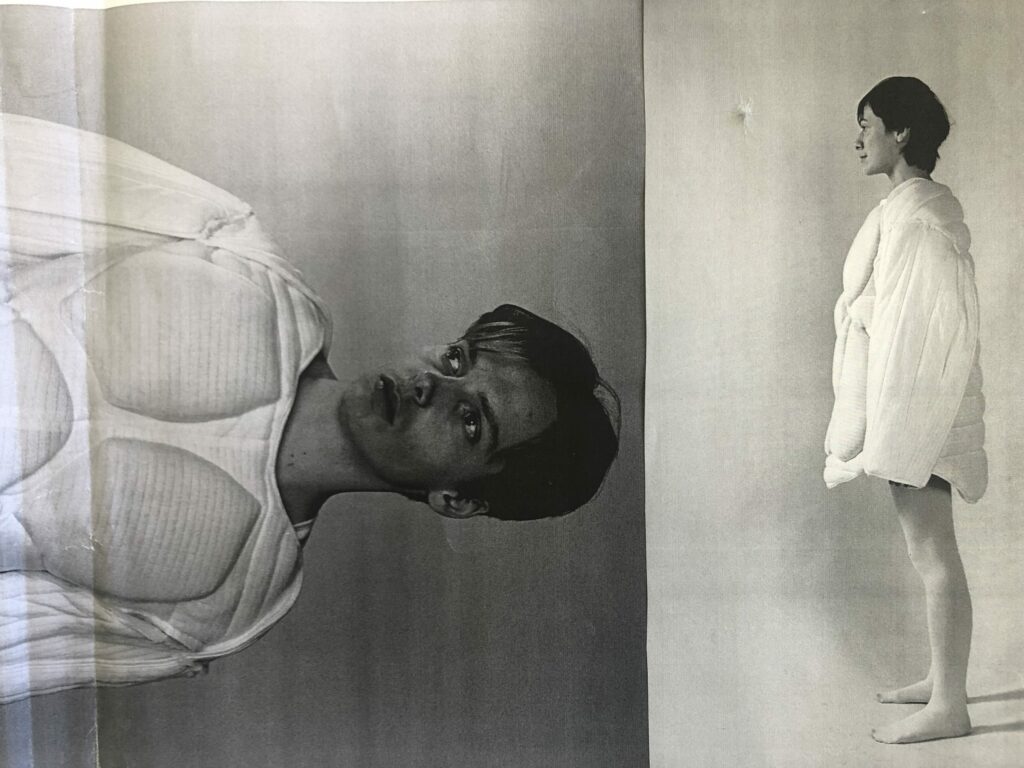
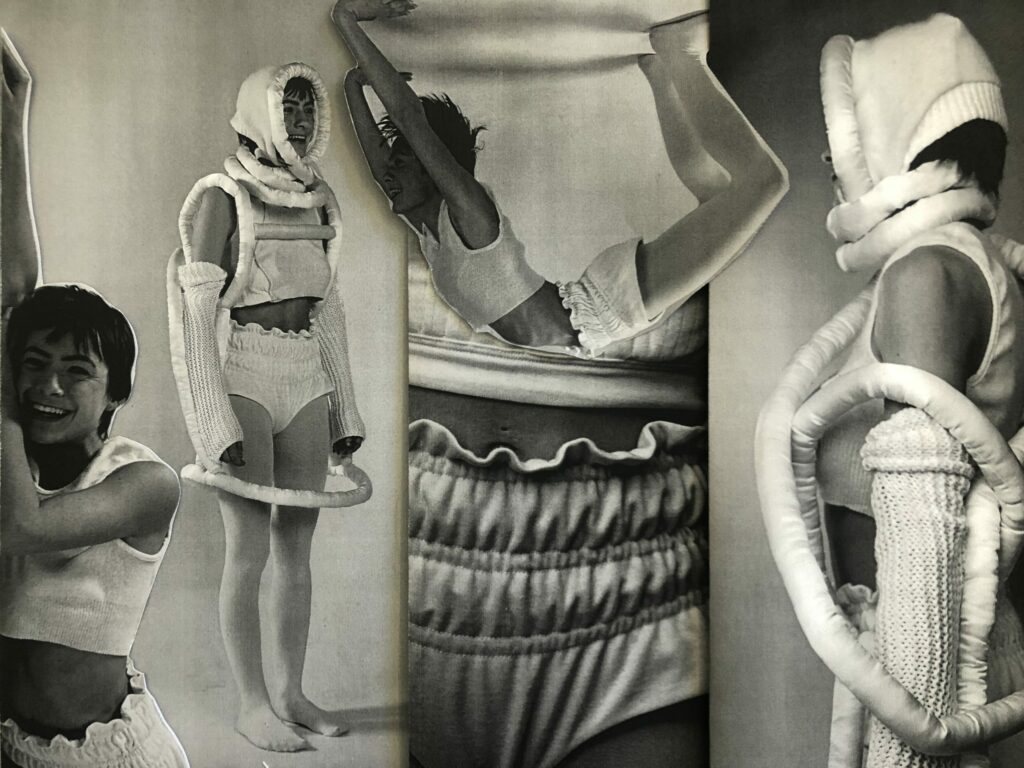
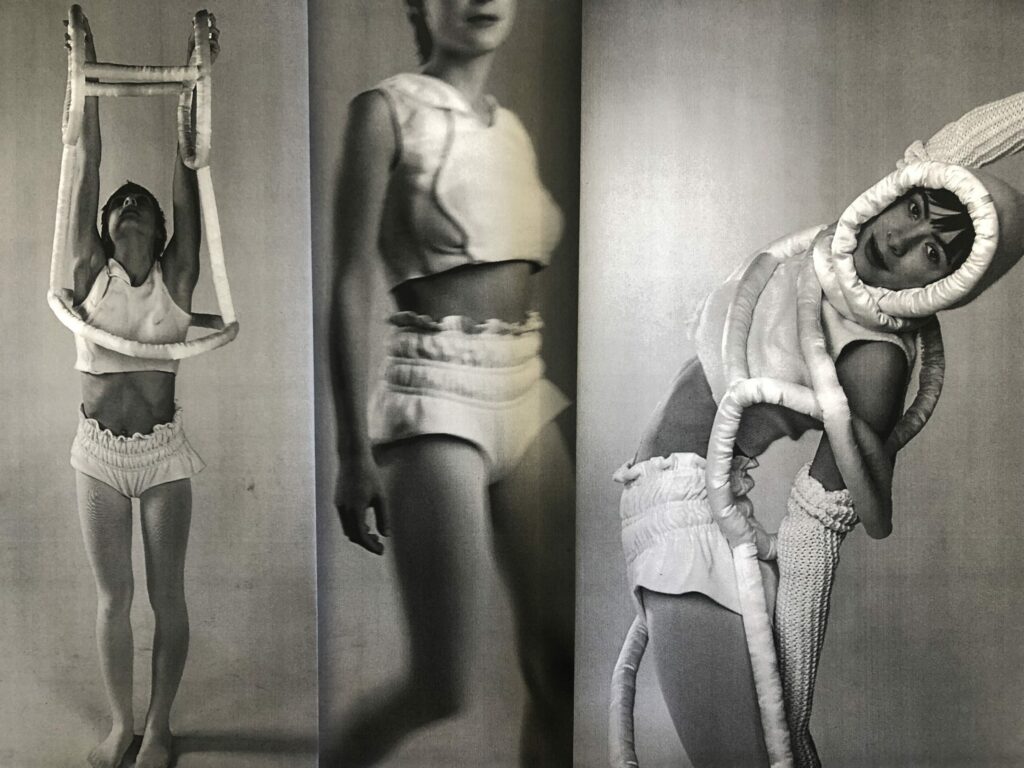
Photos: Simon Carle
Models: Iva Hoes, Leif Kessler, Khulan Klecker
//VENETIA WILLIAMS & KIARASH AMOURIZI „Twissted Berlin“
With venetia’s background in working with latex plus my observation the city of the berlin the research has been focused on the connection of Latex and its special value in relation with not only fettisch commiuneteis but also the techno calture in berlin,
At this step it was necessery to have an direct look at the one of oldest fashion latex labes of berlin , Sven.with that observation the the craftsmanship of the Latex was eluminated clearly as a craft worth showing as the sym- bole of the berlin underground culture.
Considering the environmental Concerns and my position in shop of Humboldt Forum the point of the project has been aligned with the turistict aspect of the city and the leftover produckts and discontinued line of T-shirts which was representing a contruvertial image of the city.
The main point of the project was affected with these factors and consideration. first of all to work as much as possible and exclusively with the T-shirts as the base material , and bring the craftsmanship of Latex special to berlin to reform and reconstruct the products, and that was only possible with creative use of latex particularly liquid latex.
The final aim of the project was set to represent the garments at the shop after consulting with th museum and shop.
Photos: Amine Ben Jalloul
Models: Karla Citlalli Contreras Marin
Patrick Jun, Engelmayer Venetia, Williams Alexander, Luca Schnepf
//Elea Jenner & Leon Parcsami „Self-Destruct Pull at own Risk“
Explore your suit. Working against the rapid discard of fashion by creating suits that are supposed to be destructed. Playing with the stimuli of humans we keep them invested in the piece of clothing. This collection encourages the owner to in- spect their suit closely and take it apart, leading them to to learn about the details of tailoring and gain appreciation. This causes a change in value from a well-craft- ed suit with high material and construction value to a different piece of clothing that now has emotional value for the person that has worked on it themselves. With different types of mechanisms the suit can be destructed in a way that we have designed. Pulling a thread might lead to one piece dividing itself in two.
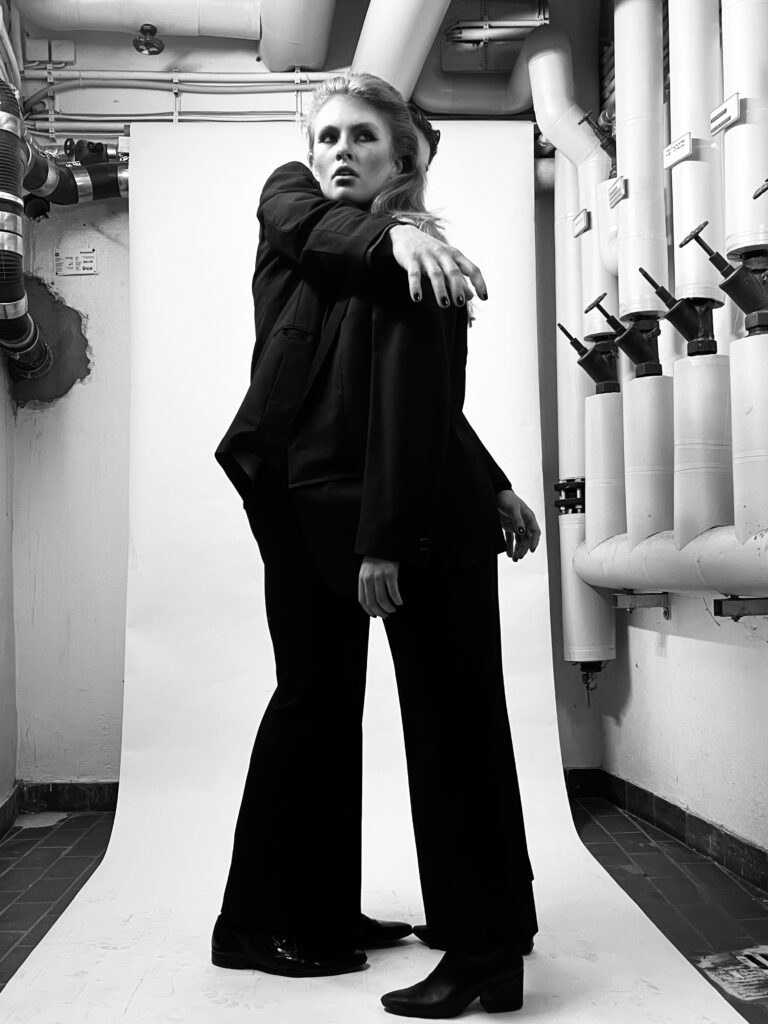
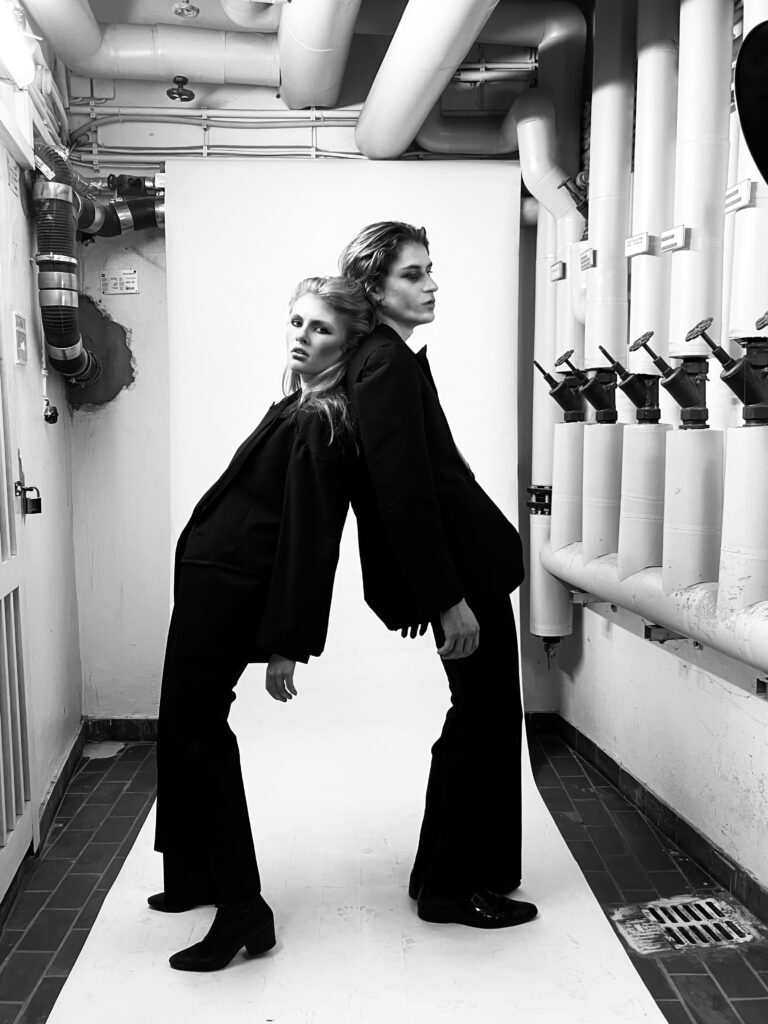
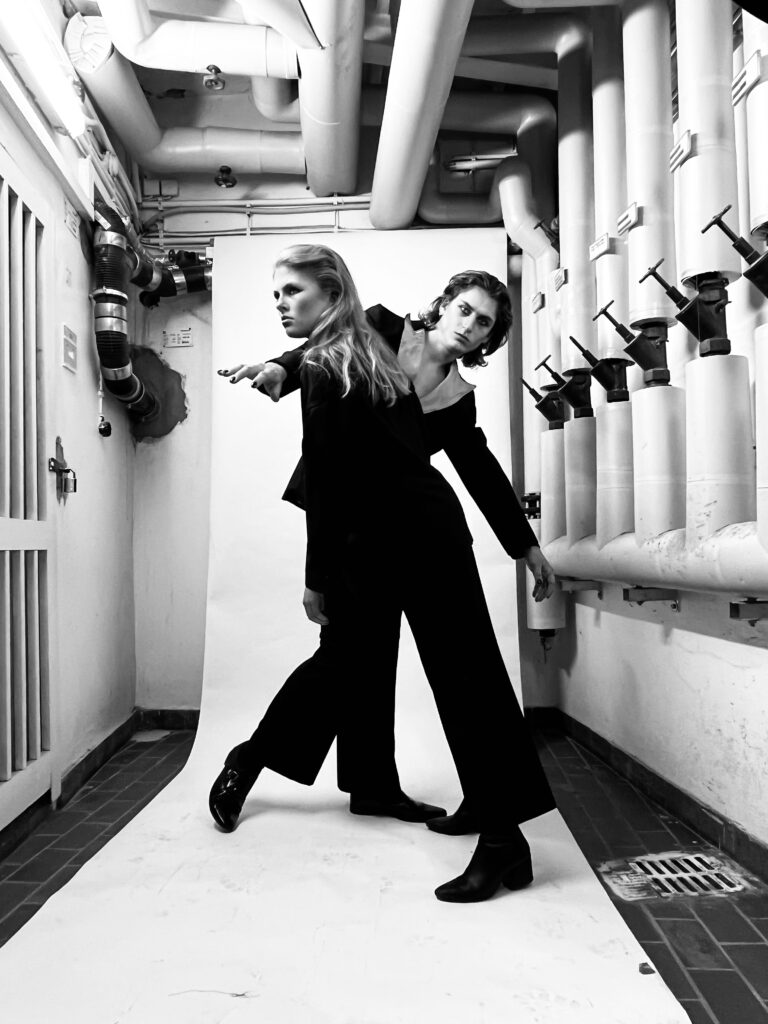
Photos: Elea Jenner, Leon Parcsami Constantin Prückner
Models: Mathilde Bing Nikolai Keller
//Iva Hoes & Michael Sieweke „BEAUTY FILTER PLUS“
Das Afterlife (für uns eine zukünftige Realität, die sich ständig durch die Digitale Welt verändert) bildet einen hybriden Zwischenraum, in dem Produkte, Ästhetiken und Menschen zu einer Mischung aus idealisierter und verzerrter Selbstrepräsentation werden.
Unsere beiden Characters wurden im Postlife (Digitalen) entwickelt um ins Afterlife (Realität) übersetzt zu werden. Beide repräsentieren neue Schönheitsideale, welche sie nun auch in der Realität ausfüllen können. Look 1 (Magician) kuratiert seinen Körper mit dekorativen Schlangenelementen während Look 2 (Illusion) ihren ganzen Körper transformiert um zu ihrem Avatar zu werden.
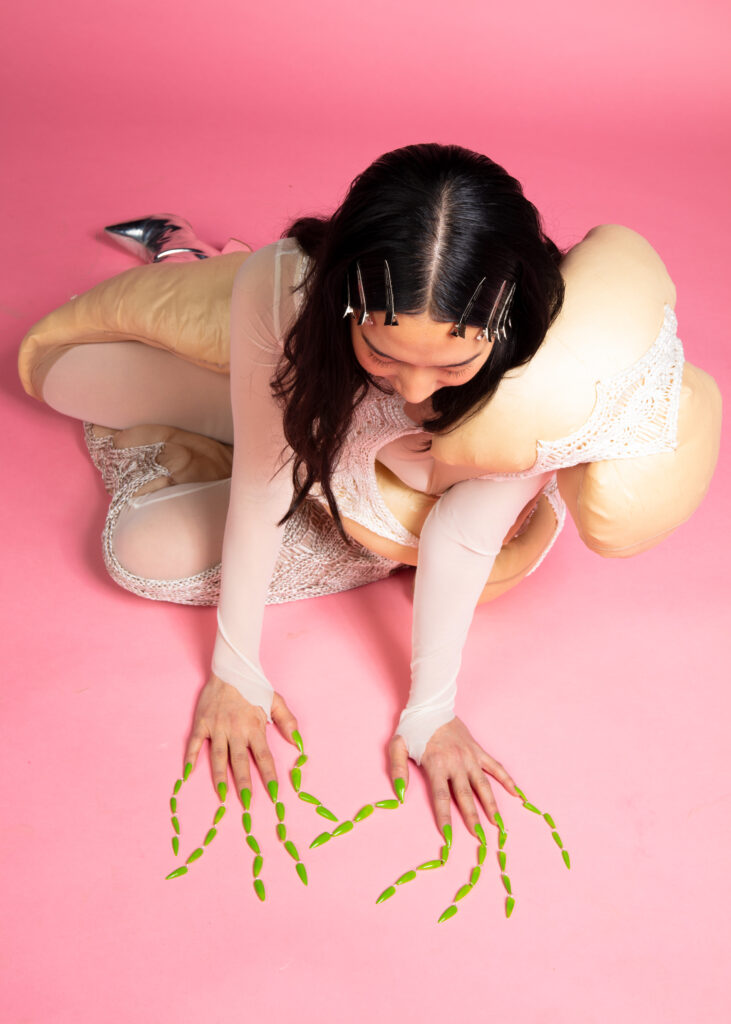
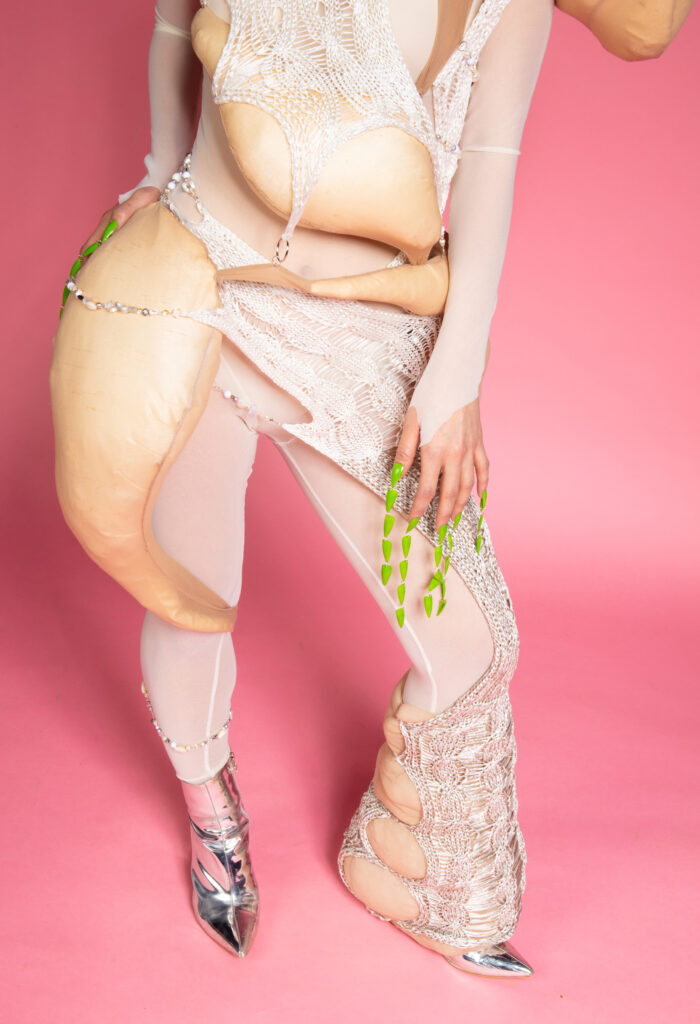
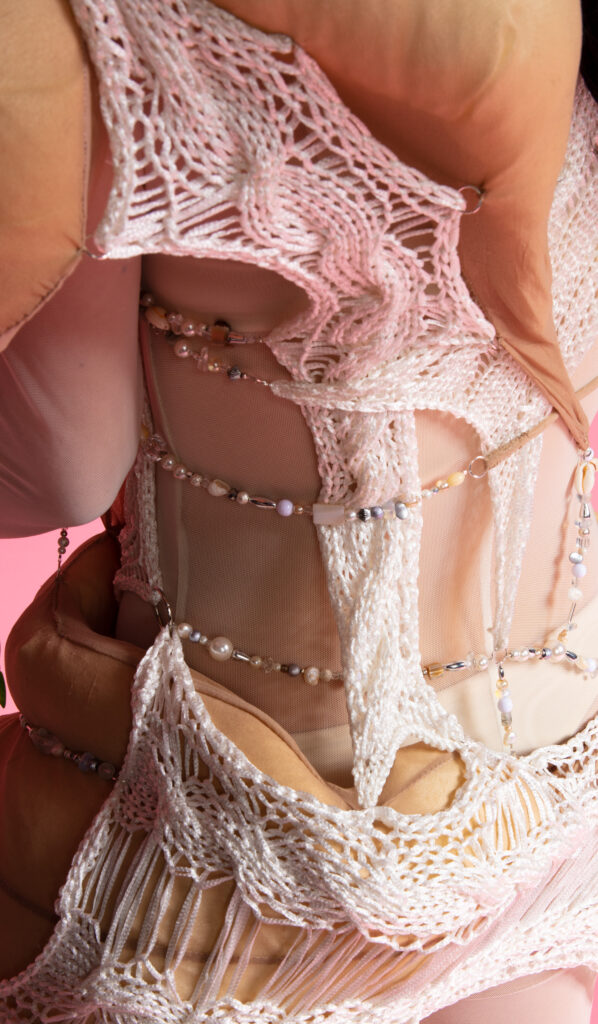
Styling und H&M: Iva Hoes
Models: Nikolai Keller und Yeram Kim
//Miriam Schade & Khulan Klecker „Zwei in Einem“
This project was about designing a piece that has a purposed second life of use. The two-piece off-white dress was made of old cashmere and merino jumpers from the Textilhafen Berlin. Technically you can undo all the crochet into two different balls of yarn leaving only the pattern pieces of knit for a new design! All the pattern pieces are here white from the outside but in color from the inside! That way, you’ve got two in one!
![]()
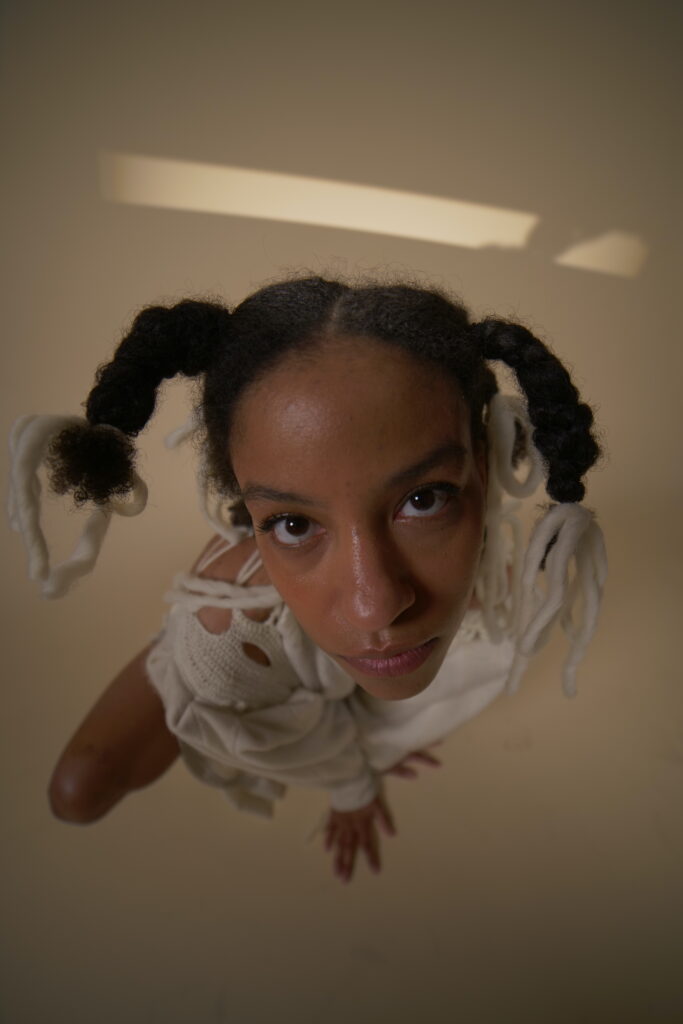
![]()
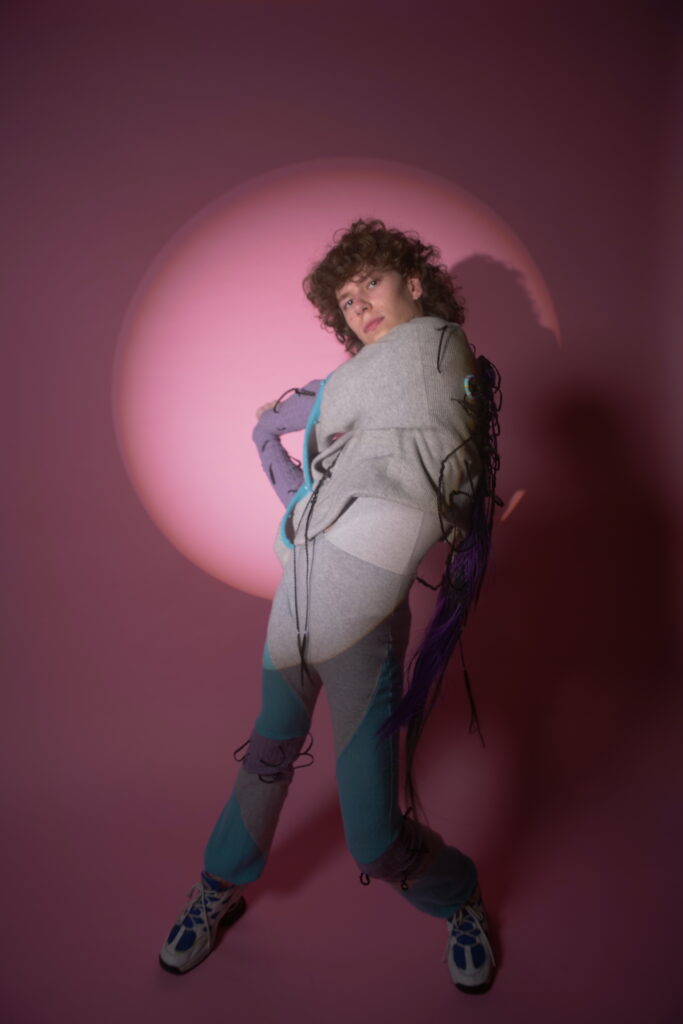

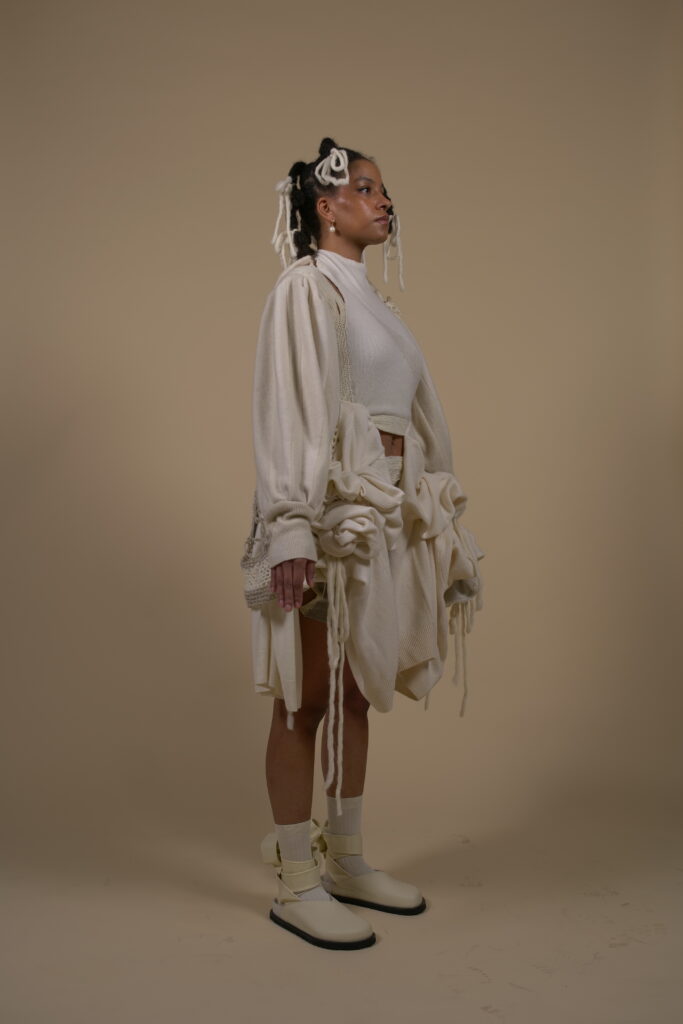
photos: Elias Martin
Models: Tim Escher, Pauline Frierson

